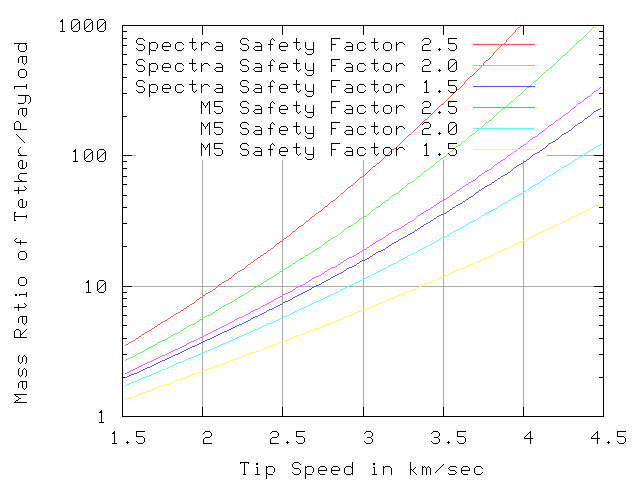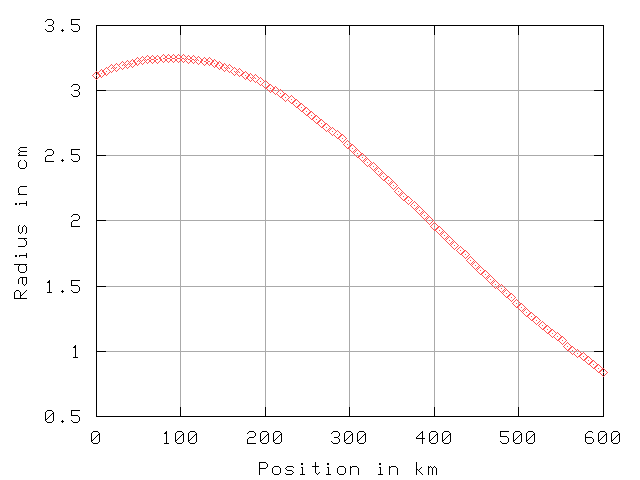
The main problem to be solved is getting off Earth cheaply. To do this we propose a "momentum exchange tether". This tether is a long cable, 500 km long, rotating around its own center of mass and orbiting the Earth. At one end of the tether is a mass called the ballast. A suborbital rocket would rendezvous with the other end of the tether (we call the payload end) when the tether is vertical with the ballast at the end farther from Earth and the rocket has matched speed and location with the tether. The ballast has enough extra momentum that even though it looses some in picking up the payload the tether stays in orbit.
Another material is dyneema which looks interesting, in part because it is used in fotino / YES2 project. It can handle 1 million cycles to 70% of peak. After 2 years exposure to sunlight (on Earth) it has 80% of strenght. This is said to be better than other fibers. Sunlight in space will be harsher, so how long a tether lasts is an issue to watch out for. Wikipedia says chemically identical to Spectra, just another brand name. A third brand name is TIVAR.
The mass of the tether and ballast will be increased for larger payloads, and faster tip speeds. The strength of the tether material has a significant impact on the mass of the tether. This is not only because the tether must hold up the payload, but it must hold up its own weight which is usually much more than the payload. The faster the tip speed the more the centripetal acceleration, and the stronger the tether needs to be. The following graph shows how the ratio of the tether mass to payload mass depends on the tip speed and safety factor for a spectra-2000 tether. This is only for the mass of the tether from the center of mass to the payload. In the normal case where the ballast is large these numbers for tether mass are just a bit low. As an example, for a 2.5 km/sec tip speed and a safety factor of 2, the tether mass as shown in the graph would be about 13 times the mass of the payload. For reasonable sized ballast the tether might be 14 times the mass.


To get to orbit, without a tether, a rocket needs to have a delta-V of about 9 km/s. With the help of a tether, the SSTT only has to provide about half the speed of a full orbiter.
One interesting source of initial ballast is the spent rocket stage that got your initial payload to orbit. This can be a significant source of free ballast. As mentioned above, a Zenit 2 second stage, empty, has a mass of 10.6 tons.
Click for SpaceTethers.com
Copyright (c) 2002, 2003 by Vincent Cate. All rights reserved.